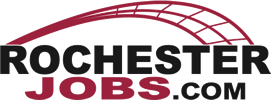A basic resume can really be divided into 5 distinct categories. When considering these five distinct categories compiling a basic resume can be relatively simple. More elaborate resumes can carry much more detail and segments than the basic resume, but for most job seekers a basic resume will do just fine. Let’s examine each resume category and “walk” you through how you can complete your own basic resume.
1) Header – The first category of a basic resume is the “Header”. The header should probably be centered, but can be done in two columns. The header should include your name, mailing address, home and current work number(s) (if applicable) and an e-mail address (again if applicable). A growing trend is the use of e-mail to exchange correspondence. Don’t forget this valuable communication trend. Also include a cellular phone number if that is the only way to directly reach you. It is extremely frustrating for a potential employer to have to constantly leave messages because you do not answer your home phone.
2) Objective – The second category of a basic resume is the “Objective”. The objective should contain one or two sentences describing the type of job you are looking for and the key skills you have to offer.
3) Summary of Qualifications – The third category of a basic resume is the “Summary of Qualifications”. This third category can also be referred to as “Experience” or “ Career Background”. This category should contain 3-5 statements describing your experience.Included should be general duties potential employers may find interesting. This area and your Cover Letter should work in sync together. This provides another opportunity for the employer to generate interest from your narrative statements. It may help to refer to your current position’s job description to generate some qualification ideas.
4) Employment History – The fourth category of a basic resume is the “Employment History”. This section lists in reverse chronological order the Company Name and Location, years employed, job title(s), and key accomplishment statements for each job title. Prepare this section separately on a separate sheet of paper.Don’t forget to use “action words” to describe each responsibility. “Action Words” are words such as “designed”, “launched”, “verified”, etc. Attempt to add “facts and figures” to each described task. If you saved time or money with any of your accomplishments than attach an objective number to this achievement.
5) Education – The fifth category of a basic resume is the “Education”. This section lists your educational background in reverse chronological order. In this area you can also consider including studies or programs completed within and outside your current employer and/or licenses and certificates.
A basic resume will be sufficient for most job opportunities. I’m a firm believer that most people make the resume process too complicated. By closely following this format you will be able to prepare a basic resume that will be presentable to employers. Now all you will need is some Microsoft Word training and you will be a resume pro!
As always, best of luck in your job search.
The following has been prepared for the general information of RochesterJobs readers. It is not meant to provide advice with respect to any specific legal or policy matter and should not be acted upon without verification by the reader.
Joe Stein
WNY Human Resources Professional
Feel free to contact Joe Stein regarding questions or comments at:
Joe Stein

